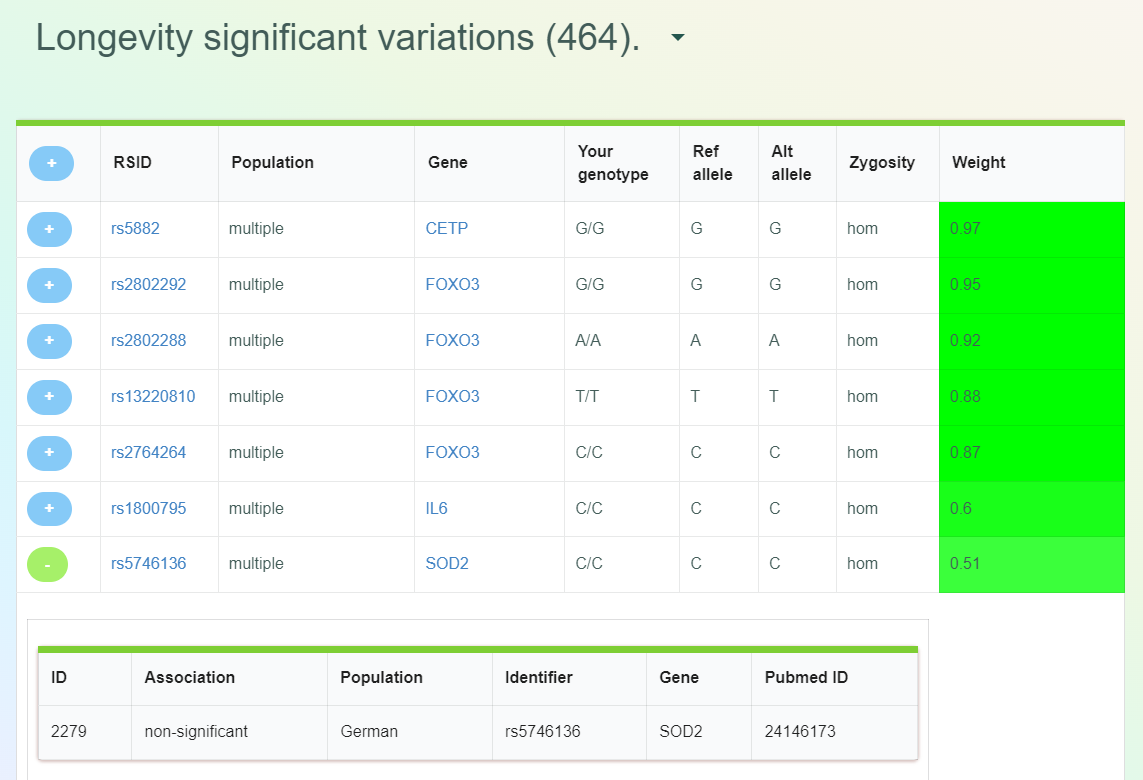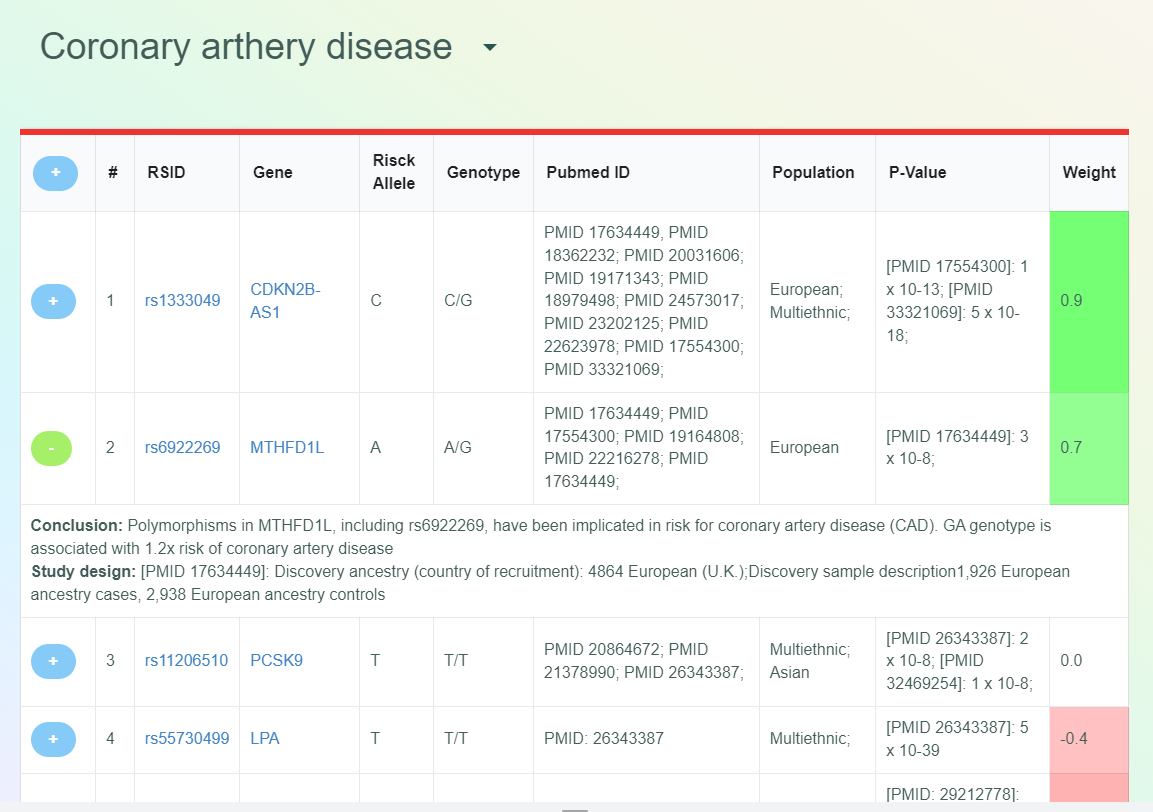Viewing Reports
Just-DNA-Seq makes a set of reports on a genome that contain data about PRS, longevity-related gene variants, known cancer risks, coronary artery disease risks, and drug responses.
You can learn how to get your longevity report and install Longevity Combined reporter in Getting Started.
Source code on GitHub (here you also can learn how to install it from GitHub): https://github.com/dna-seq/oakvar-longevity
Part 1: Polygenic risk scores (PRSs)
Longevity2 report contains Longevity PRS and Health Risk PRS.
PRS is represented as a percentile within a given population. For example, if you have the 95th percentile in Longevity PRS, it means your genetic chances to gain extreme longevity is higher than 95 out of every 100 people in a chosen population.
If you have the 70th percentile in Heath Risk PRS, which means your personal genetic risk of the disease development is higher than 70 out of every 100 people in a chosen population.
It does not take into account environmental factors and is based on genetics only.

Part 2: Longevity Significant Variations
This report contains gene variants that have a significant influence on longevity. It contains the following columns:
+ - clicking this green button opens detailed information on each entry (row), and the button becomes red with - sign. Clicking this - closed the details. Clicking + in the header opens the details for all rows and behaves in the same way (clicking - in the header closes all detail sections).
RSID - reference sequence ID of the variant.
Population - population(s) on which the research was conducted, e.g. Greek, Ashkenazi Jewish, etc., or multiple (for more details, open +).
Gene - gene the variant belongs to.
Your Genotype - which variants your genome contains. Note that in the case of homozygosity two letters should be the same, and for heterozygosity, they differ.
Ref allele - reference allele.
Alt allele - alternative allele.
Zygosity - hom (homozygosity) or het (heterozygosity).
Weight - the weight of this variant (the degree of significance).

Part 3: Drugs Report
This report contains known issues of response to certain drugs associated with gene variants. It has the following columns:
# - number of an entry (row).
Variant/Haplotypes - by rsID.
Drug(s) - name(s) of drug(s) response to which is affected by the variants.
Phenotype Category: Efficacy, Dosage, or Other.
Significance - yes or no.
Sentence - description of the case.
Allele Of Frequency In Cases - allele of the variant (one or more letters A, T, C or G) in cases involved.
Allele Of Frequency In Controls - allele of the variant in controls.
Ratio Stat Type
Effect
Note: In some browsers, the last one or two columns may be found beyond the visible area at 100% zoom level; in such cases try zooming out to 90%, 80%, and so on until everything is visible.

Part 4: Cancer Report
This report shows variants with known cancer risks and contains the following columns:
+ - acting the same way in all reports (see above).
# - number of an entry (row).
Chrom - chromosome the variant belongs to, e.g. chr1.
Position - position of the variant on the chromosome (number).
Gene - gene the variant belongs to, like in the previous report.
RSID - reference sequence ID of the variant.
cDNA Change - change in the coding DNA by the variant.
Zygosity - hom or het (see above).
Allele Frequency - frequency of the allele.
Phenotype Name - description of condition(s) associated with the variant.
Significance - description of the significance of this variant.

Part 5: Coronary artery disease Report
The report shows variants with known coronary arthery disease risks and contains the following columns:
+ - acting the same way in all reports (see above).
# - number of an entry (row).
RSID - reference sequence ID of the variant.
Gene - gene the variant belongs to, like in the previous report.
Risk Allele - the allele that contains the risk trait
Genotype - which variants your genome contains. Note that in the case of homozygosity two letters should be the same, and for heterozygosity, they differ.
Pubmed ID - the ID number to access corresponding articles on PubMed
Population - population(s) on which the research was conducted, e.g. Greek, Ashkenazi Jewish, etc., or multiple (for more details, open +).
P-Value - is a number describing how likely it is that your data would have occurred under the null hypothesis.
Weight - the weight of this variant (the degree of significance).
